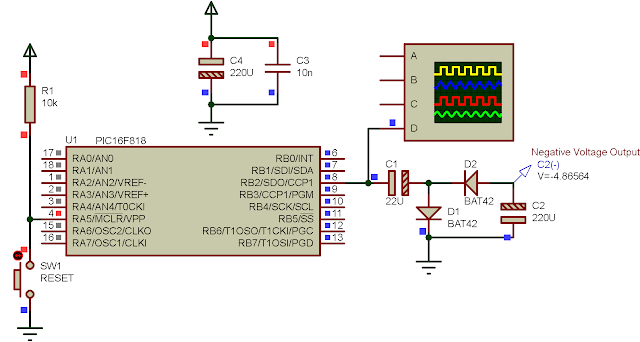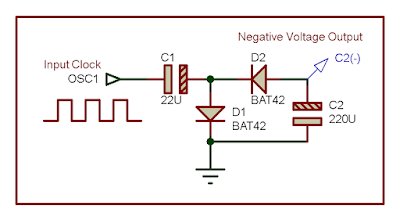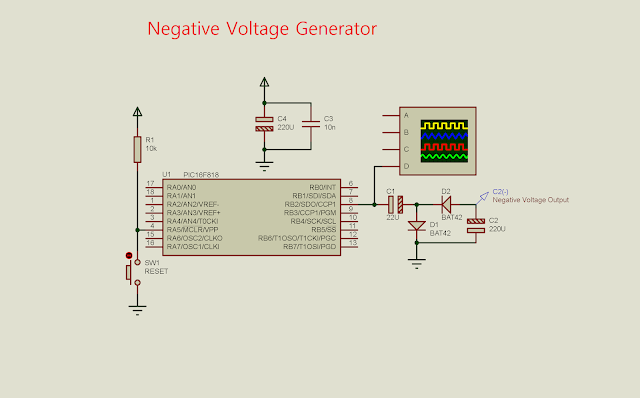An Overview Of Negative Voltage Creating
A negative voltage level is useful in some situations, a negative voltage reference for ADC module, a negative supply voltage for an op-amp.
 |
| A simulation program sample |
It's easily built using two high speed diodes, two polarized capacitor with an oscillator. An oscillator could be created with NE555 timer, or using an op-amp with some extra passive components.
 |
| A block of negative voltage generator. At the high cycle of OSC1, it charges the capacitor C1, and bypass D1 diode to the ground creating a potential at both positive and negative pin of C1. |
Another option to create a negative voltage is using a DC-DC converter, as a case of using MC34063A.
Using these two method as per above require an extra components placement on board. In any application where a microcontroller is needed, we can use a PWM signal created by the on-board microcontroller. Most 8-bit microcontroller, currently shipped with a PWM peripheral inside. If it isn't so, PWM signal could be created using software, by toggling an output pin with a specific period.
PIC16F818 PWM Programming And Interfacing With CCS PICC
 |
| Schematic Diagram, excludes the supply voltage circuit for the MCU. CCP1 creates a PWM output at RB2. The MCU clock is internal 8 MHz RC oscillator inside. |
 |
| A simulation screen shot. Output voltage probe connects to C2(-). Output voltage reaches around -5 V when C2 is fully charged. |
No comments:
Post a Comment